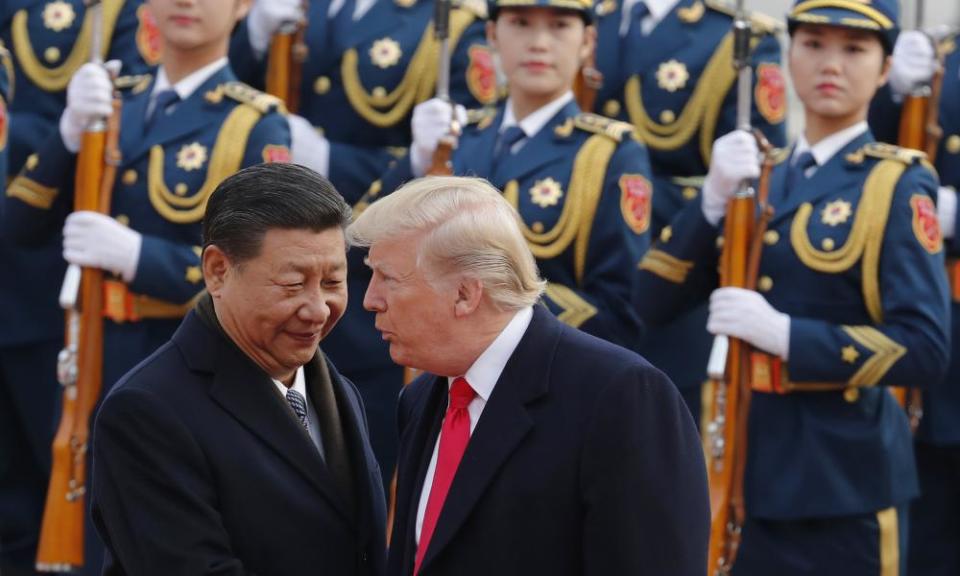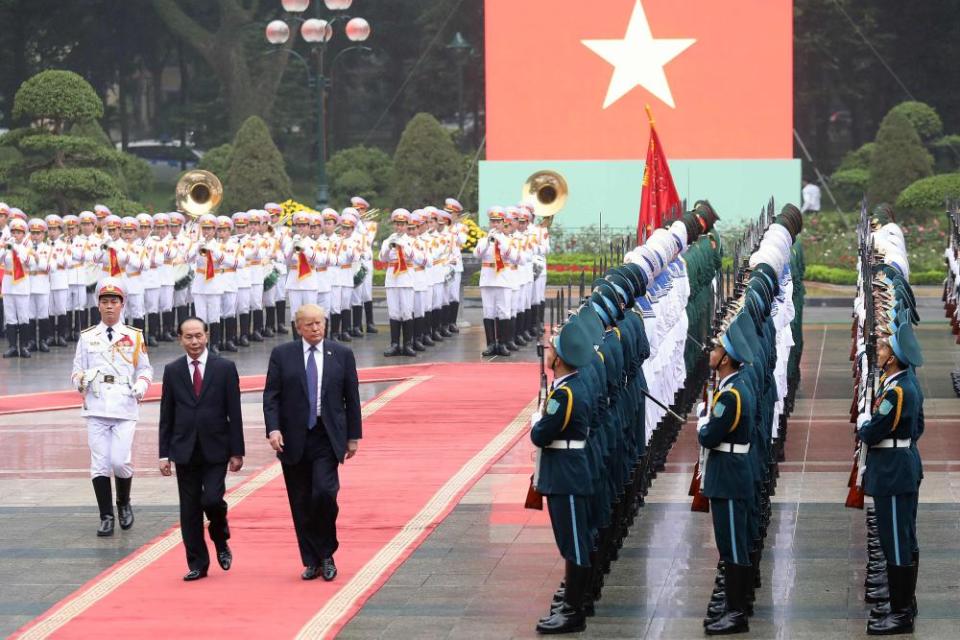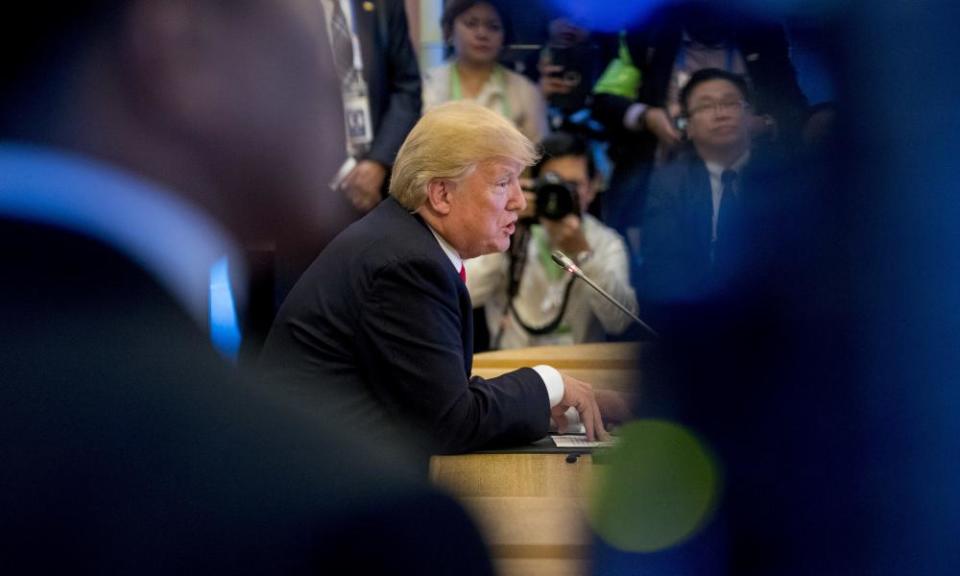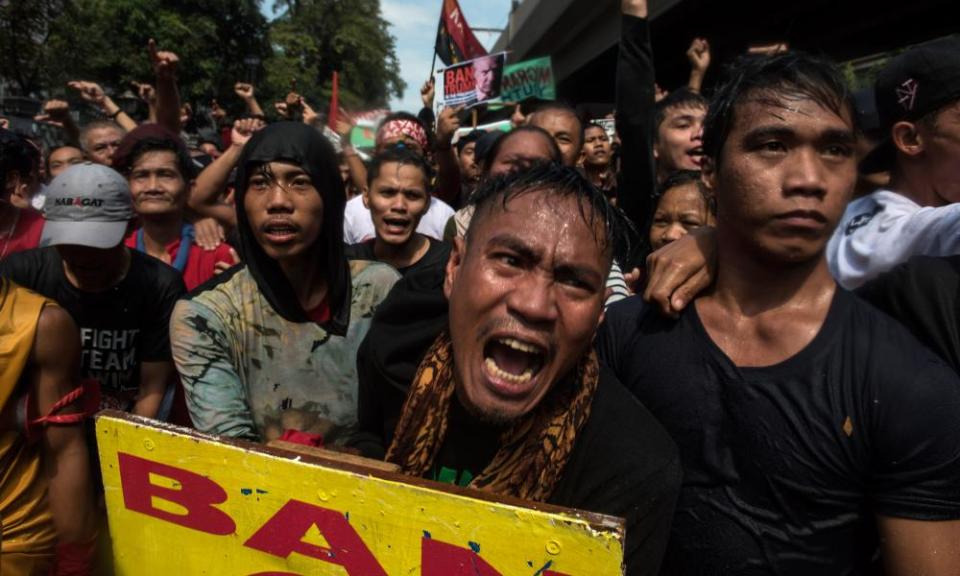Trump sticks to the script on Asia tour – but still leaves confusion in his wake
While the president’s 12-day tour went better than expected (and expectations were low), uncertainty lingers about his policies in Asia

After 12 days of daily summits in five countries on the Pacific rim, Donald Trump prepared to head home on Tuesday leaving behind a region largely relieved that the US president did not escalate existing relations but still confused about his administration’s policies in Asia.
Trump has said he will deliver his own verdict on the trip in what he promised would be a “major statement” on North Korea and trade, the headline themes of the trip. From past experience that is likely to be an upbeat assessment. Several times along the road he described his reception as unprecedented and claimed that “big progress” had been made on trade deals, though he gave no details.
In the region, the general reaction appears to be that the tour had gone better than expected, but in some cases that was set against very low expectations. In South Korea, for example, there were fears that Trump’s spat with Kim Jong-un could result in a flare-up in hostilities while he was in the region. That did not happen. The US president did have one Twitter flare-up, after he left the Korean peninsula lashing out at Kim Jong-un who he said had insulted him by calling him old “when I would NEVER call him ‘short and fat?’”

However, he did conclude his tweet on a more soothing note, claiming: “I try so hard to be his friend – and maybe someday that will happen!”
On his visits to Japan and South Korea, where the challenge of containing North Korea was the focus of summit meetings, his tone was on the whole more measured and resolute than expected. In South Korea, where officials had worried about the lack of chemistry between President Moon Jae-in, and Trump’s previous threats to tear up a bilateral trade deal and make Seoul pay for US-made missile defence systems, his speech about the strength of the bilateral relationship to the national parliament, went down particularly well.
“The national assembly speech was a surprise. It was really well received,” said Sue Mi Terry, the senior fellow for Korea chair at the Centre for Strategic and International Studies. “It showed Trump valued the alliance and he showed he knew the history. The Koreans bought it.”

Terry also said the Seoul government also welcomed the fact that Trump made no further threats of unilateral strikes against North Korea, and appeared to point towards the possibility of some form of diplomatic off-ramp from the current military buildup and mutual threats.
From the point of view of regional security and shoring up Pacific alliances against both North Korea and Chinese expansionism in the South China Sea, many observers said the trip had gone relatively well.
“In general it went as scripted,” said Patrick Cronin, a senior director of the Asia-Pacific security programme at the Centre for a New American Security. “It was concentrated in north-east Asia on a pressure strategy on North Korea. It was meant to build off our alliances and partnerships and in all cases, the leaders who met with President Trump who are our allies and partners came away with more positive feelings than not.”
The overall title of the administration’s strategy is a “free and open Indo-Pacific”, and to that end, the tour marked the revival of the “Quad”, an association of the US, Japan, India and Australia. Senior officials from the four countries met on the sidelines of the Manila summit, for the first time in a decade.
However, it is unclear how this grouping would act as a counterweight to China’s rising power in the region, and how it squared with Trump’s “America first” trade strategy, based on walking away from the multilateral Trans-Pacific Partnership, which was supposed to be an economic bulwark against Beijing’s power, and Trump’s insistence on renegotiating trade relationships with allies in Asia, to benefit the US.

“If the administration’s central goal here was to reaffirm American commitment and remove concerns about the future of US leadership in the region, I don’t think they significiantly moved the needle in terms of alleviating anxiety in the region,” said Ely Ratner, a China expert at the Council on Foreign Relations.
“The contradictions between the America first agenda and a strategy predicated on US leadership in the region, have not been resolved. And without an affirmative US trade and investment strategy, its unclear how they will be. That’s clearly the achilles heel here.”

